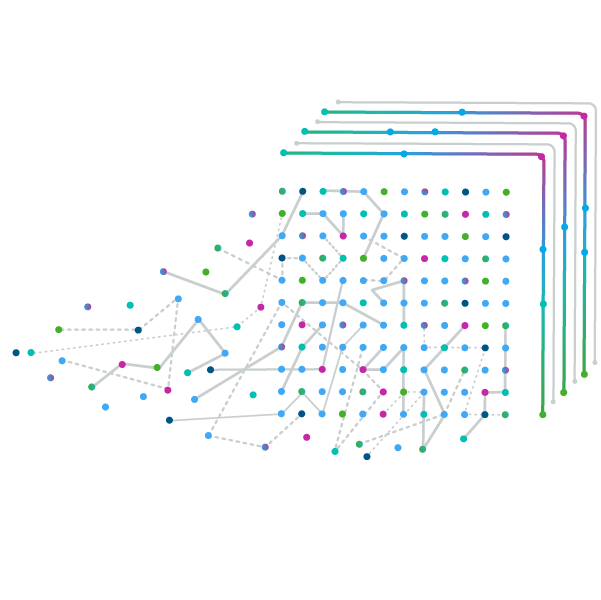-
Americas
-
Asia & Oceania
-
A-I
J-Z

EMEA Thought Leadership
Developing IQVIA’s positions on key trends in the pharma and life sciences industries, with a focus on EMEA.
Learn more -
Middle East & Africa

EMEA Thought Leadership
Developing IQVIA’s positions on key trends in the pharma and life sciences industries, with a focus on EMEA.
Learn more
Regions
-
Americas
-
Asia & Oceania
-
Europe
-
Middle East & Africa
-
Americas
-
Asia & Oceania
-
Europe
Europe
- Adriatic
- Belgium
- Bulgaria
- Czech Republic
- Deutschland
- España
- France
- Greece
- Hungary
- Ireland
- Israel
- Italia

EMEA Thought Leadership
Developing IQVIA’s positions on key trends in the pharma and life sciences industries, with a focus on EMEA.
Learn more -
Middle East & Africa

EMEA Thought Leadership
Developing IQVIA’s positions on key trends in the pharma and life sciences industries, with a focus on EMEA.
Learn more
SOLUTIONS
-
Research & Development
-
Real World Evidence
-
Commercialization
-
Safety & Regulatory Compliance
-
Technologies
LIFE SCIENCE SEGMENTS
HEALTHCARE SEGMENTS
- Information Partner Services
- Financial Institutions
- Global Health
- Government
- Patient Associations
- Payers
- Providers
THERAPEUTIC AREAS
- Cardiovascular
- Cell and Gene Therapy
- Central Nervous System
- GI & Hepatology
- Infectious Diseases and Vaccines
- Oncology & Hematology
- Pediatrics
- Rare Diseases
- View All

Impacting People's Lives
"We strive to help improve outcomes and create a healthier, more sustainable world for people everywhere.
LEARN MORE
Harness the power to transform clinical development
Reimagine clinical development by intelligently connecting data, technology, and analytics to optimize your trials. The result? Faster decision making and reduced risk so you can deliver life-changing therapies faster.
Research & Development OverviewResearch & Development Quick Links

Real World Evidence. Real Confidence. Real Results.
Generate and disseminate evidence that answers crucial clinical, regulatory and commercial questions, enabling you to drive smarter decisions and meet your stakeholder needs with confidence.
REAL WORLD EVIDENCE OVERVIEWReal World Evidence Quick Links

See markets more clearly. Opportunities more often.
Elevate commercial models with precision and speed using AI-driven analytics and technology that illuminate hidden insights in data.
COMMERCIALIZATION OVERVIEWCommercialization Quick Links

Service driven. Tech-enabled. Integrated compliance.
Orchestrate your success across the complete compliance lifecycle with best-in-class services and solutions for safety, regulatory, quality and medical information.
COMPLIANCE OVERVIEWSafety & Regulatory Compliance Quick Links

Intelligence that transforms life sciences end-to-end.
When your destination is a healthier world, making intelligent connections between data, technology, and services is your roadmap.
TECHNOLOGIES OVERVIEWTechnology Quick Links
CLINICAL PRODUCTS
COMMERCIAL PRODUCTS
COMPLIANCE, SAFETY, REG PRODUCTS
BLOGS, WHITE PAPERS & CASE STUDIES
Explore our library of insights, thought leadership, and the latest topics & trends in healthcare.
DISCOVER INSIGHTSTHE IQVIA INSTITUTE
An in-depth exploration of the global healthcare ecosystem with timely research, insightful analysis, and scientific expertise.
SEE LATEST REPORTSFEATURED INNOVATIONS
-
IQVIA Connected Intelligence™
-
IQVIA Healthcare-grade AI®
-
IQVIA AI Assistant
-
Human Data Science Cloud
-
IQVIA Innovation Hub
-
Decentralized Trials
-
Patient Experience Solutions with Apple devices
WHO WE ARE
- Our Story
- Our Impact
- Commitment to Global Health
- Code of Conduct
- Sustainability
- Privacy
- Executive Team
NEWS & RESOURCES

Unlock your potential to drive healthcare forward
By making intelligent connections between your needs, our capabilities, and the healthcare ecosystem, we can help you be more agile, accelerate results, and improve patient outcomes.
LEARN MORE
IQVIA AI is Healthcare-grade AI
Building on a rich history of developing AI for healthcare, IQVIA AI connects the right data, technology, and expertise to address the unique needs of healthcare. It's what we call Healthcare-grade AI.
LEARN MORE
Meet the IQVIA AI Assistant
Your new expert analyst is here. Be at the forefront of data-driven decision-making with a new generative AI tool that enables you to interact with our products and solutions like never before. Get results you can trust, faster.
LEARN MORE
Your healthcare data deserves more than just a cloud.
The IQVIA Human Data Science Cloud is our unique capability designed to enable healthcare-grade analytics, tools, and data management solutions to deliver fit-for-purpose global data at scale.
LEARN MORE
Innovations make an impact when bold ideas meet powerful partnerships
The IQVIA Innovation Hub connects start-ups with the extensive IQVIA network of assets, resources, clients, and partners. Together, we can help lead the future of healthcare with the extensive IQVIA network of assets, resources, clients, and partners.
LEARN MORE
Proven, faster DCT solutions
IQVIA Decentralized Trials deliver purpose-built clinical services and technologies that engage the right patients wherever they are. Our hybrid and fully virtual solutions have been used more than any others.
LEARN MORE
IQVIA Patient Experience Solutions with Apple devices
Empowering patients to personalize their healthcare and connecting them to caregivers has the potential to change the care delivery paradigm.
LEARN MOREIQVIA Careers
Featured Careers
Stay Connected

WE'RE HIRING
"At IQVIA your potential has no limits. We thrive on bold ideas and fearless innovation. Join us in reimagining what’s possible.
VIEW ROLES- Blogs
- The AI-driven Forecaster

The life sciences industry has slowly begun to adopt machine learning (ML) and artificial intelligence (AI) to streamline workflows, automate manual processes, and leverage predicative analytics for more effective decision-making. This evolution is touching every aspect of drug development and commercialization – including forecasting – and that’s a great thing for commercial forecasters.
For decades, forecasters have relied on Excel spreadsheets and cut-and-paste tools to collate data and run forecasting numbers. These old-school strategies are time-consuming, costly and face a high risk of error. They also limit the number of questions forecasters can ask, and how rapidly they can generate results to inform their future market strategies.
By replacing spreadsheets and manual number crunching with trained algorithms, forecasting technology can now run an increasing set of predictive analytics, including scenario comparison, bias detection across multiple forecasts, and outlier analysis to show where forecast assumptions are ‘outside the norm’, all with a high degree of speed and accuracy.
These innovations aren’t just huge time savers. They make it possible to deliver better, more far-reaching forecasts, and to pose questions from multiple angles. But while automation saves forecasters effort, there’s concern that we’re losing the critical ‘human element’ of forecast building.
We Need Human Forecasters More Than Ever

Like many industry professionals, commercial forecasters in the pharma industry have a love-hate relationship with the idea of machine learning and automation. On one side it promises to make their jobs easier, help them to be more accurate, and eliminate hours of drudge work. But there is also the persistent concern that if the technology gets too automated, they will be out of a job.
It’s time to put those fears aside.
Even the most automated forecasting solution is still only as good as the humans behind it. For example, an automated forecasting solution may be able predict anticipated revenues for a new product based on demand, competition, and expected market share, but the forecaster is still the one to determine what that means for the organization, including:
- What are the best ‘levers’ to increase our overall market share vs. our competitors?
- If we made a significant change to our marketing spend or go-to-market strategy, what would the impact be to the forecast?
- How does the forecast align with the company’s strategic goals in terms of revenue targets, launch timing, etc.?
Pulling these insights from a forecast technology requires human interpretation and communication, which are often overlooked in the larger quest of just “getting to the numbers”.
From Number Crunching to Story Telling

While forecasters’ jobs are safe, these new platforms will change how they do their jobs. In the past making such predictions required large internal or offshore data crunching, forcing forecasters to limit the number of questions they can ask and delaying their access to results, potentially for weeks. That made forecasting less effective, and added time, cost and risk to the decision-making process.
The immediacy and control of automated platforms fundamentally alters what questions they can ask, and how quickly they can get answers. This frees forecasters to spend more of their time and expertise on value-added tasks: understanding the key drivers behind the commercial forecast and identifying practical strategies that drive value.
Forecasting automation may eliminate outsourced off-shore jobs for people who build spreadsheets and manually run numbers. But the forecaster role is emerging in the industry as a more critical function than ever, providing insights a machine could never achieve. And for those willing to make the most of ML/AI-driven tools, automation can help forecasters amplify their strategic value to the business, reduce turnaround time, improve forecast accuracy, and drive better business results.
To learn more about IQVIA’s Forecast Horizon platform click here or contact us at ForecastHorizon@iqvia.com











